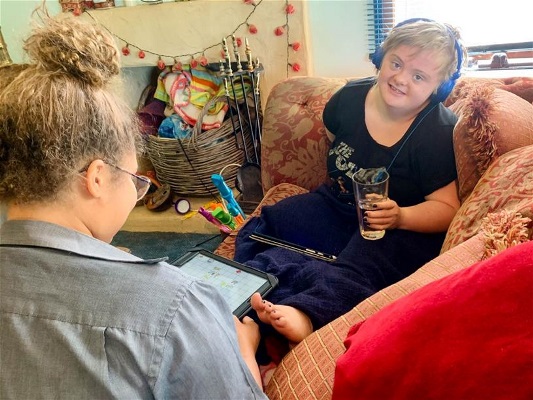Blogs
AT stories and reviews from your peers
Thinking Inside the Big Box
19 August 2020
 While assistive technology can be fancy stuff like powered clotheslines that drop to our seated height or specialised kettles and such, and don’t get me wrong! I love it all… the thing that really greases my wheels is when I am having trouble doing something, I think about it, and come up with a solution using what I already have to hand.
While assistive technology can be fancy stuff like powered clotheslines that drop to our seated height or specialised kettles and such, and don’t get me wrong! I love it all… the thing that really greases my wheels is when I am having trouble doing something, I think about it, and come up with a solution using what I already have to hand. Before I became aware of what disability means to me in the context of the disability community, I had (and maintain) an abiding love affair with stuff that fixes stuff to other stuff like: Velcro, Sugru (opens in new tab), tape, wire, cable ties, and those new washable temporary sticky pads. I love screws and nails, but even more I love functional components and mounts like Lego for adults!
But what has only just started to enter my consciousness is not just how to adapt my working environment to allow me to have more ready access to my tools or to hold things still, but stuff like using a box to make a fridge higher, using roller drawers to allow for easier access, or using a fitness band for physio exercises.
I’d noticed that many families were sharing how awesome Kmart is for this kind of thing. They really hit the nail on the head when it came to providing lines of toys, fitness, and home items that were both functional and stylish at low price points. It seemed like they must have had someone really clever in their marketing department who revamped their image.
 People shared how their fitness line had balance boards and beams and strength balls and that their toy department had sensory toys and their home department had cushions for positioning. This was thrilling, because I saw that as people were struggling to access and navigate the funded disability assistive tech space, that the spill over from what has traditionally been considered to be therapy stuff was being used by a wider audience, which made it more accessible to all.
People shared how their fitness line had balance boards and beams and strength balls and that their toy department had sensory toys and their home department had cushions for positioning. This was thrilling, because I saw that as people were struggling to access and navigate the funded disability assistive tech space, that the spill over from what has traditionally been considered to be therapy stuff was being used by a wider audience, which made it more accessible to all. So when my attention was pointed to their “Independent Living Buying Guide” and I was asked what I thought; I said that I thought that it seemed like they noticed that people with disabilities were buying their stuff and so they wanted to lean into that market. But the thing is, what they nailed when they went from commonly used therapy stuff marketed to the broader market, they just forgot about when they opened their Independent Living line of products.
Apart from the Folding Walking Stick - Floral, everything looks like what a sick person would use. That made me feel something inside that wasn’t pride and happiness. However, in discussion with others I am aware that products don’t have to be stylish to be beneficial. That’s true. Still, I feel that since they seem to have been so good at providing other product lines that are colourful and stylish, why does the independent living range of products (i.e. targeted at people with disability and aged folk) suddenly mean we don’t get notes of style to let us live independently with dignity?



